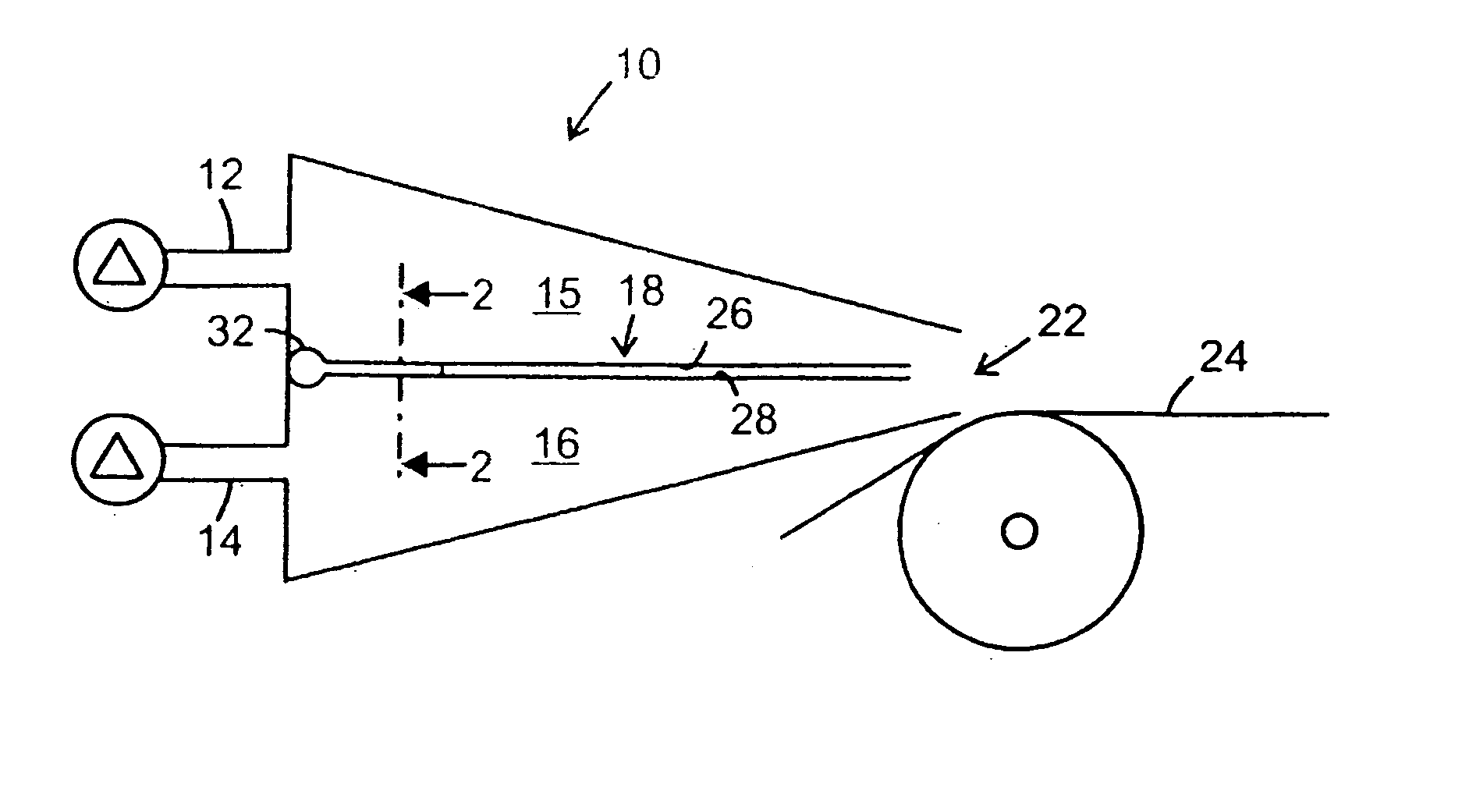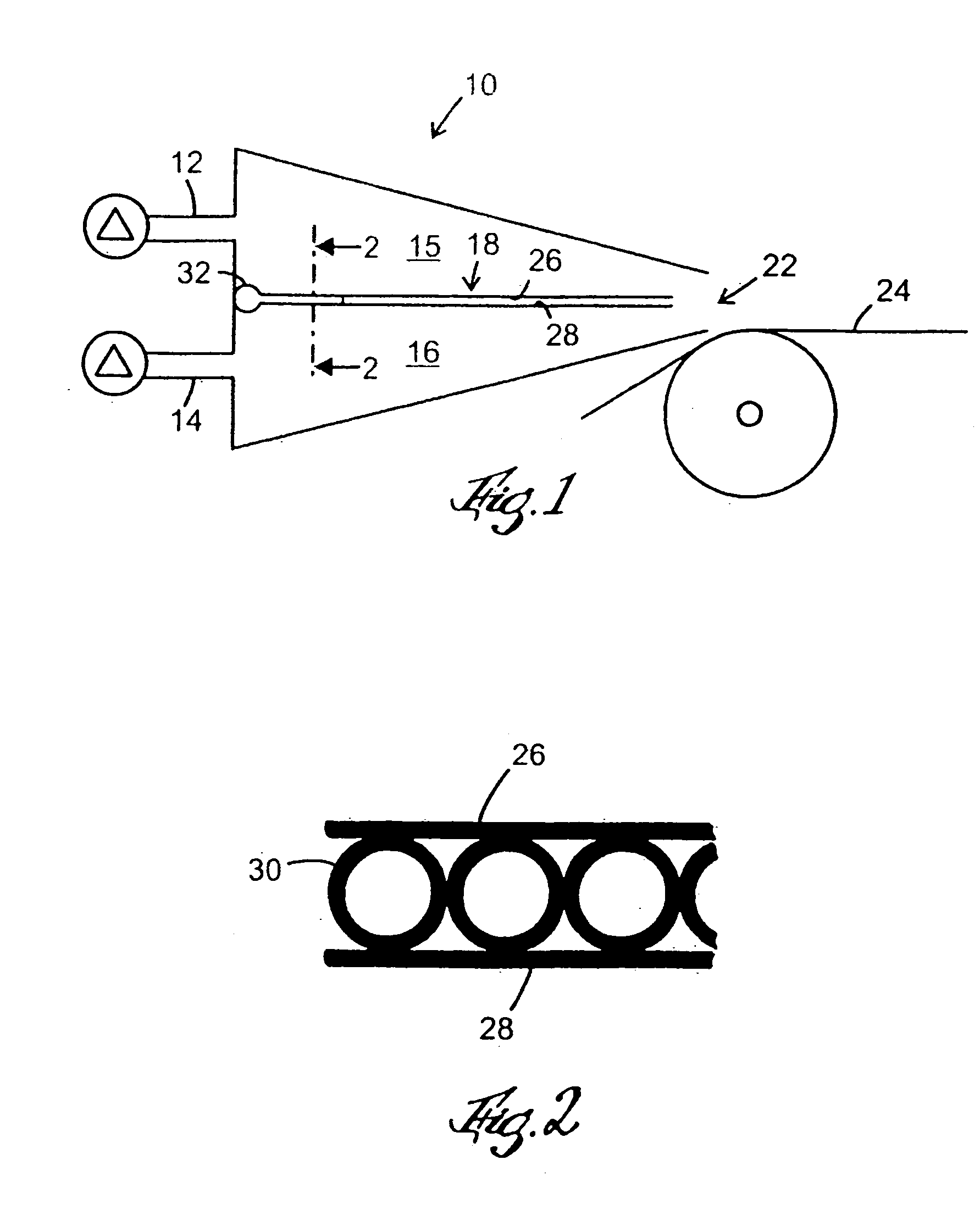Method of forming a fibrous web and machine therefor
a fiber suspension and fiber technology, applied in the field of forming a layered fibrous web and a machine therefor, can solve the problems of severe mixing, impossible reality, and preventing the possibility of obtaining a good layer purity, so as to reduce the wake effect and prevent the mixing of fiber suspension
- Summary
- Abstract
- Description
- Claims
- Application Information
AI Technical Summary
Benefits of technology
Problems solved by technology
Method used
Image
Examples
Embodiment Construction
[0020]FIG. 1 shows a cross section through a head box 10 for a paper machine. The head box 10 is supplied with two different streams of fiber suspension via inlet nozzles 12, 14 that feed the fiber suspension into ducts 15, 16, which are arranged above each other and separated by means of a substantially horizontal blade device 18. The fiber suspension is dispensed out from the head box 10 through an outlet 22 onto a paper forming wire 24, where the two layers of fiber suspensions are superposed to form a layered paper web. FIG. 2 shows a blade device 18 constituted by an upper sheet 26, a lower sheet 28 and internal channels in the form of parallel pipes 30 arranged between the upper and the lower sheet. The pipes 30 are arranged side-by-side and parallel to the flow direction of the fiber suspension. The sheets 26, 28, are arranged parallel and mutually spaced as shown in FIG. 1 and 3. Water is pumped from an upstream end of the head box 10 by means of a pumping arrangement (not s...
PUM
| Property | Measurement | Unit |
|---|---|---|
| pressure | aaaaa | aaaaa |
| flow rate | aaaaa | aaaaa |
| height | aaaaa | aaaaa |
Abstract
Description
Claims
Application Information
 Login to View More
Login to View More - R&D
- Intellectual Property
- Life Sciences
- Materials
- Tech Scout
- Unparalleled Data Quality
- Higher Quality Content
- 60% Fewer Hallucinations
Browse by: Latest US Patents, China's latest patents, Technical Efficacy Thesaurus, Application Domain, Technology Topic, Popular Technical Reports.
© 2025 PatSnap. All rights reserved.Legal|Privacy policy|Modern Slavery Act Transparency Statement|Sitemap|About US| Contact US: help@patsnap.com



